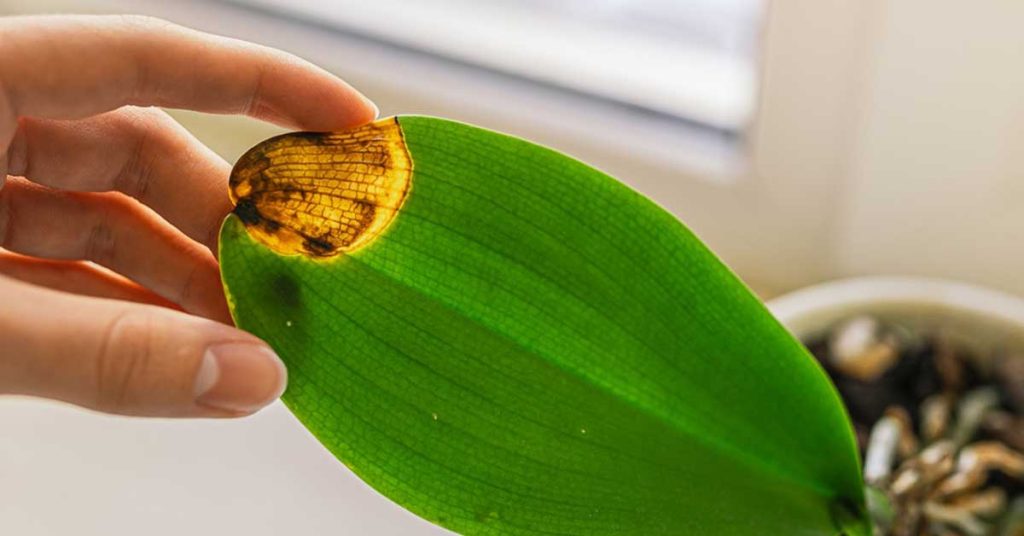I love orchids and have had tons of different varieties over the years. Owl orchids and monkey orchids are two of my favorites! Despite my love for orchids, I have definitely made a lot of mistakes when growing them. One of those mistakes is providing too much sunlight. Many orchids are low-light plants. In nature, they often grow beneath the canopy of large, tropical trees, rarely being treated to direct sunlight. This makes them susceptible to sunburn. A sunburned orchid is a sad thing, but it’s usually something that can be fixed with a few changes and a little bit of luck. Let’s talk about what I’ve done to save my own burnt orchids and how you might be able to rescue your own plants.
Identifying burnt orchid leaves

It’s pretty easy to identify a sunburned orchid. If your orchid’s leaves are suddenly turning yellow, whithering, looking dehydrated even if they have adequate water, or have large, brown spots on the leaves, there’s a chance it’s getting too much sun. The above image is a classic example of an orchid with burnt leaves. The good news is, if you make a few changes now, you can probably save your orchid. Sadly, if it’s too far gone, it may be a goner.
How to revive a sunburned orchid
It can be a huge bummer if an orchid you’ve been carefully taking care of for months or years starts to burn and die, but there are 3 things that you can do to improve your orchid’s odds of surviving.
Move out of direct sunlight
The first, and probably most obvious fix, is to move your orchid out of direct sunlight and into an area with bright, indirect light. Doing so should help prevent any future burns and give your orchid the right conditions needed to heal and grow.
Remove severely damaged leaves
If your orchid leaf has a limited area of burned growth, like in the image above, you don’t really need to do anything with that leaf. Don’t cut away the burned area unless it appears to be spreading or diseased in some way. If the burned spot is getting larger even after moving it, you can try cutting away the burned part of the leaf and leaf the healthier part alone. Unfortunately, if the entire leaf appears to be a loss, it would be better to simply remove it from the plant entirely. It likely isn’t contributing to the plant’s growth and may be taking resources away from your orchid that could be spent on growing new foliage.
Be patient and wait for new growth
This is the hardest part: fertilizer, more water, and repotting won’t do much to rescue your burnt orchid plant. All you have to do is triage the situation: move the plant to an area with proper light, cut away fully dead leaves, and then wait. If, after some time, you see new foliage begin to grow, you’ve likely managed to save your orchid. Congratulations! If the plant continues to whither and all growth has died, there’s a very real chance that your orchid just couldn’t be saved.
My orchid isn’t in the sun, why is it burnt?
One of the most perplexing cases of a sunburned orchid that I ever experienced was one in which no direct sunlight was reaching my orchid. It was in a location with bright, indirect light. And it was even winter! Kind of a strange time of year and situation for an orchid to be getting burned leaves. But it turns out, heat can also cause burned leaves in an orchid. It’s not exactly a sunburned orchid, but my orchid was situated very close to a heater, and temperatures in that particular spot where the heat was coming out were hitting 95+ degrees Fahrenheit. It was a little too much heat for my orchid! So if you have a sunburned orchid without the sun, it may be a temperature issue.













